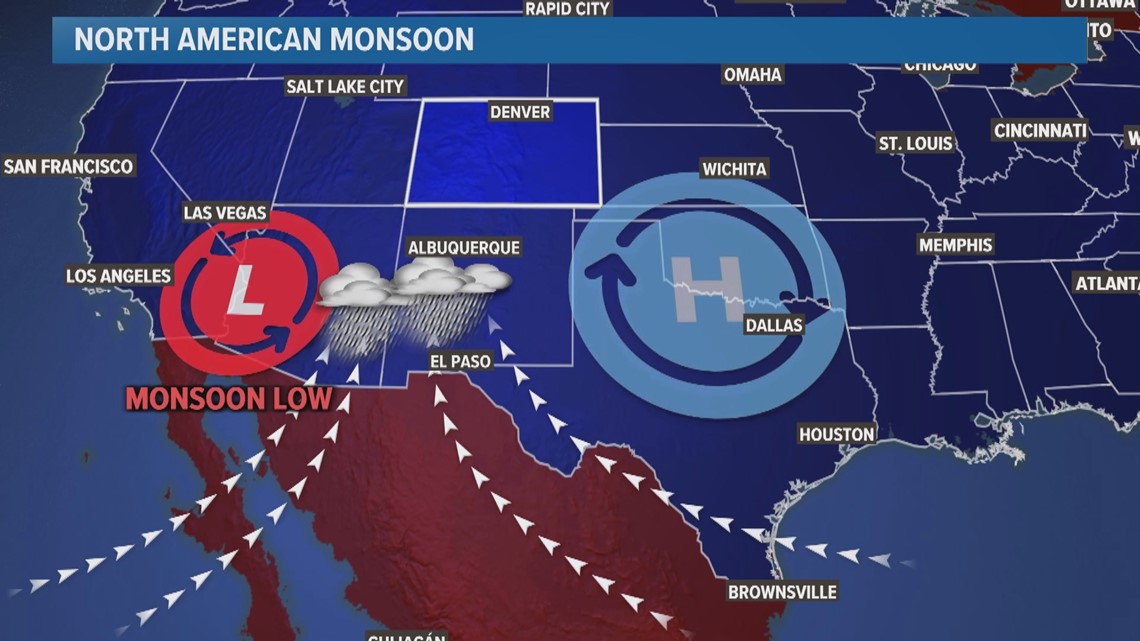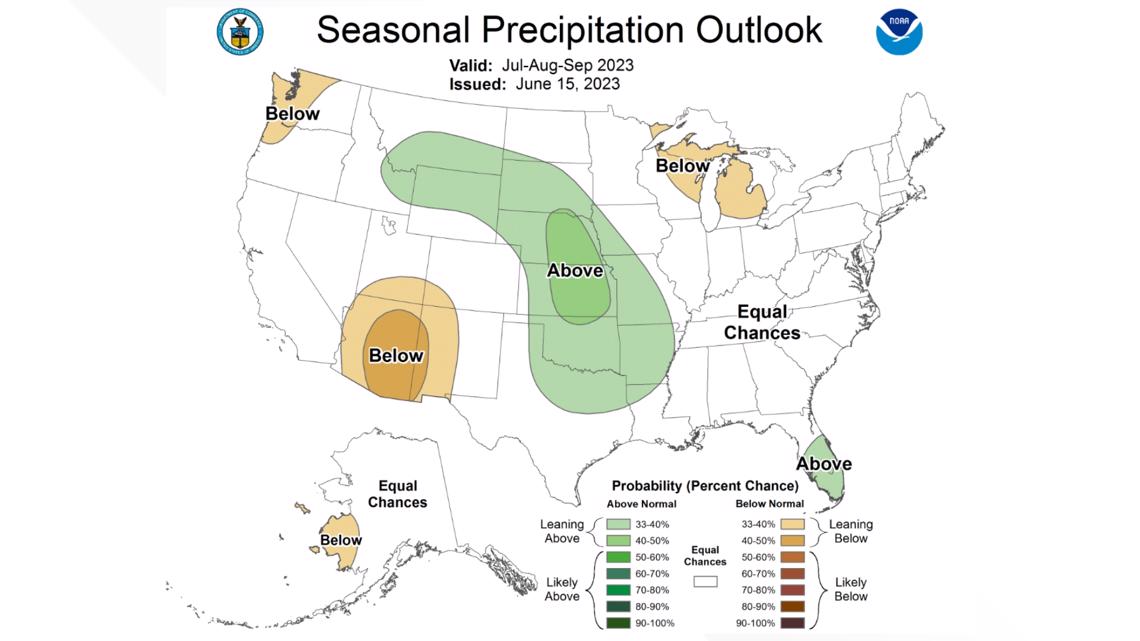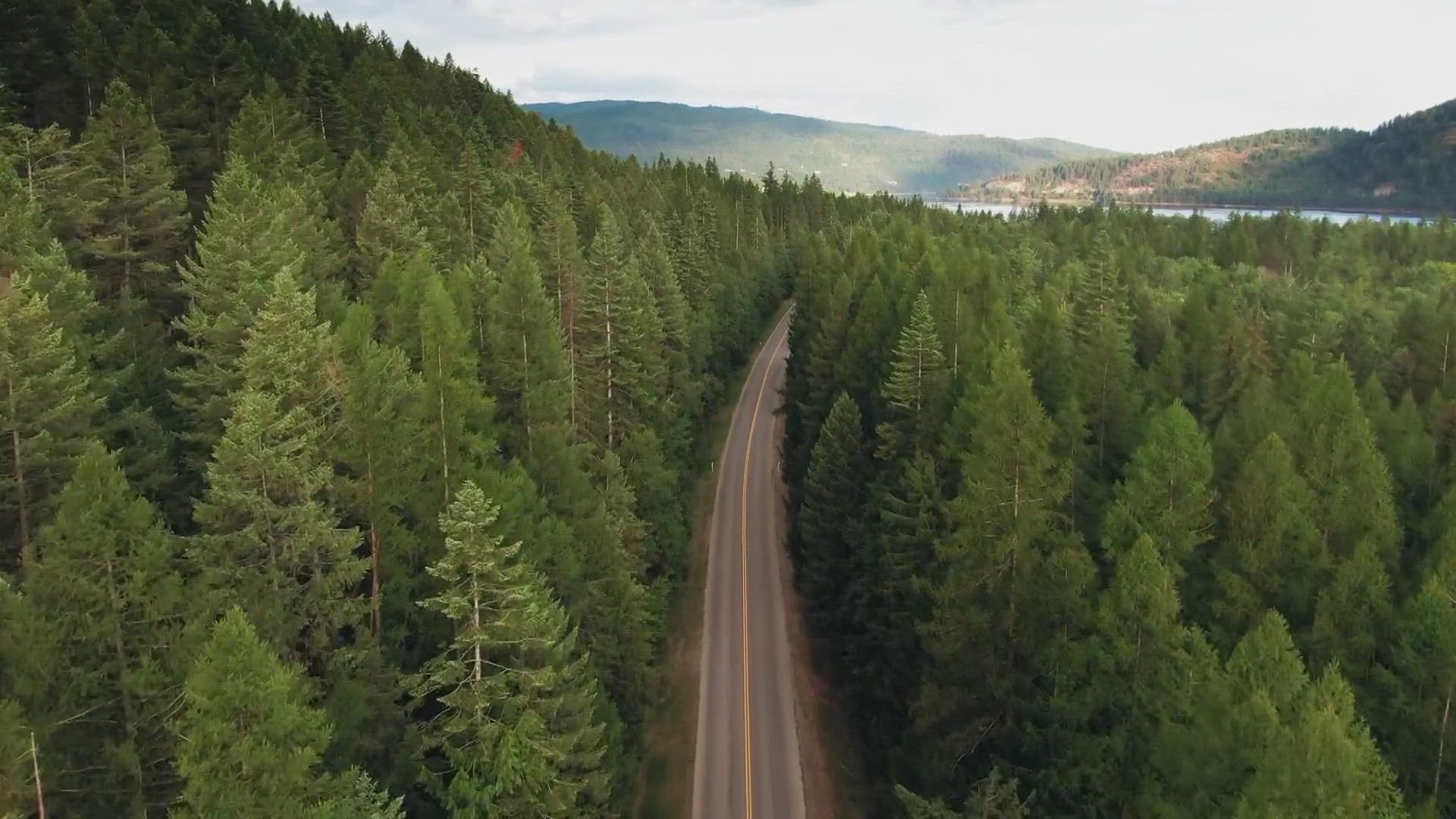COLORADO, USA — Wednesday is the first day of summer, and that means it's time for monsoon season in Colorado.
A monsoon is often mistaken for a storm or a heavy downpour, but it's really just a seasonal shift in winds, which can sometimes lead to additional storms and/or precipitation.
As the desert region in the southwestern U.S. heats up, it causes low pressure to develop. The circulation of that monsoon low, and the opposing circulation of frequent high pressure to the east of Arizona, work together to flip the winds from a predominantly offshore flow to onshore flow.


That ushers in additional water vapor from the Gulf of Mexico and the east Pacific Ocean.
There are several monsoons across the planet, but the one that impacts the United States is called the North American Monsoon. It can reach all the way up into the Rocky Mountains but rarely has an impact on the Front Range urban communities or the Eastern Plains.
2023 monsoon outlook
The National Weather Service is forecasting a weaker or slightly drier than average monsoon for the summer of 2023 for an area that includes southwest Colorado.
Most of Colorado has the same chance of getting above-average precipitation this summer as it does of getting below-average precipitation.


One of the reasons for the below-average monsoon outlook is the development of an El Niño weather pattern this June. El Niños tend to weaken the subtropical high and shift it to the west during the summer months.
An unusually wet winter in the southwestern part of the country has also boosted the soil moisture in the region, which could slow the onset of the monsoon low.
Wildfire impact of monsoon
A snowy and rainy spring in the Colorado Rockies has reduced the drought and large wildfire risk, but that moisture buffer won’t last the entire summer.
For instance, the 1000-hour large fuel moisture index shows that wildfire conditions can reverse in 45 dry, sunny days or less. Hence the importance of the summer monsoon.
The last two summers have had very strong and active monsoon seasons. Places like Durango, Crested Butte, Aspen and Dillon had near-average or above-average rain from June 15 through Sept. 15.
And there was very little forest fire activity in the Colorado mountains in 2021 or 2022.
2020, on the other hand, was the biggest wildfire season in Colorado history despite having above-average snowpack that winter. The difference may have been one of the weakest monsoons in history – often referred to as the Non-Soon.
Monsoon moisture typically has less impact east of the Continental Divide, but Grand Lake that year got no boost from the monsoon. The summer of 2020 was the driest there in 78 years.
SUGGESTED VIDEOS: Colorado Climate

